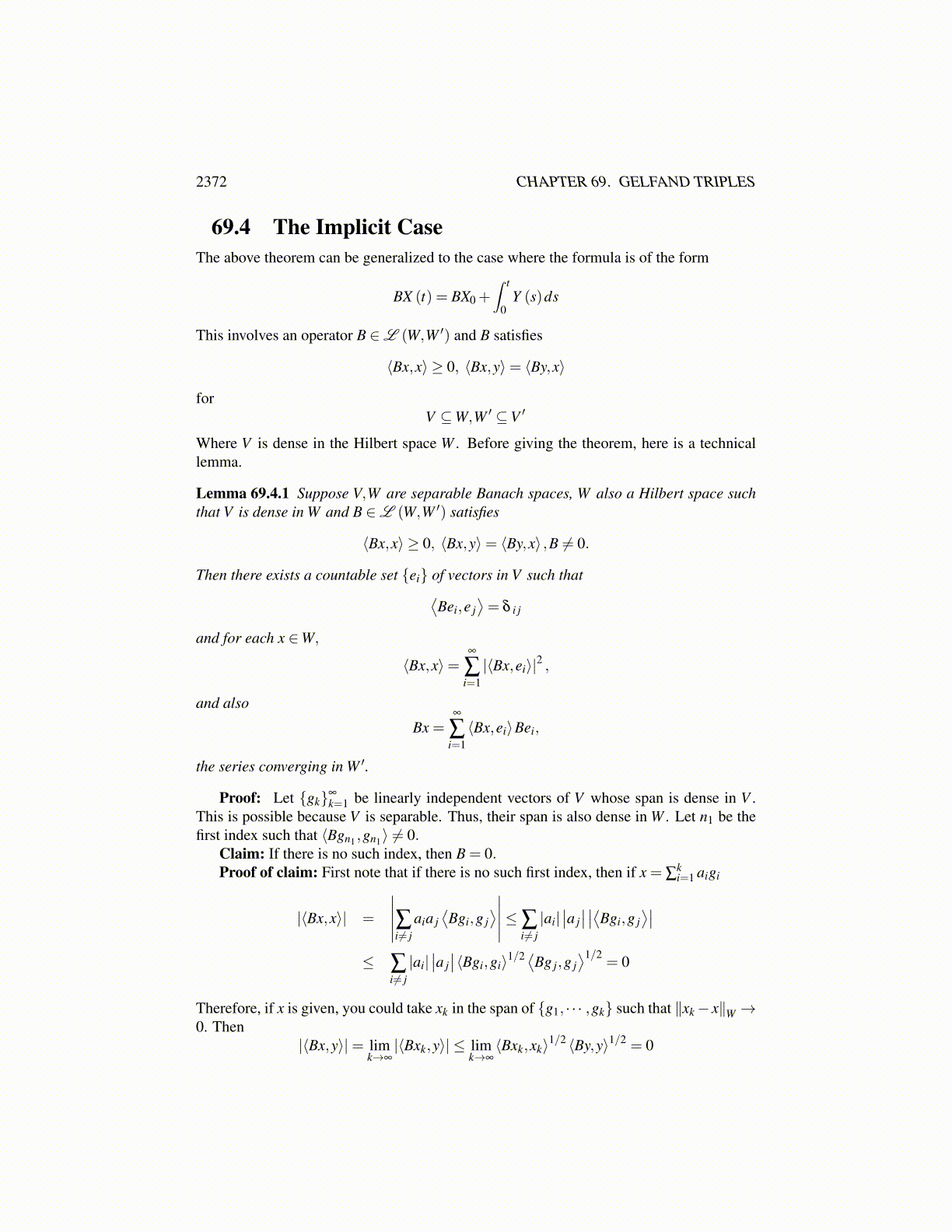
2372 CHAPTER 69. GELFAND TRIPLES
This proves the first claim of the lemma.Consider now the claim that t→ X (t) is weakly continuous. Letting v ∈V,
limt→s
(X (t) ,v) = limt→s⟨X (t) ,v⟩= ⟨X (s) ,v⟩= (X (s) ,v)
Since it was shown that |X (t)| is bounded independent of t, and since V is dense in H, theclaim follows.
Now
−m−1
∑j=0
∣∣X (t j+1)−X (t j)
∣∣2H = |X (tm)|2−|X0|2−
m−1
∑j=0
2∫ t j+1
t j
⟨Y (u) ,X rk (u)⟩du
= |X (tm)|2−|X0|2−2∫ tm
0⟨Y (u) ,X r
k (u)⟩du
Thus, since the partitions are nested, eventually |X (tm)|2 is constant for all k large enoughand the integral term converges to ∫ tm
0⟨Y (u) ,X (u)⟩du
It follows that the term on the left does converge to something. It just remains to considerwhat it does converge to. However, from the equation solved by X ,
X(t j+1
)−X (t j) =
∫ t j+1
t j
Y (u)du
Therefore, this term is dominated by an expression of the form
mk−1
∑j=0
(∫ t j+1
t j
Y (u)du,X(t j+1
)−X (t j)
)
=mk−1
∑j=0
⟨∫ t j+1
t j
Y (u)du,X(t j+1
)−X (t j)
⟩
=mk−1
∑j=0
∫ t j+1
t j
⟨Y (u) ,X
(t j+1
)−X (t j)
⟩du
=mk−1
∑j=0
∫ t j+1
t j
⟨Y (u) ,X
(t j+1
)⟩−
mk−1
∑j=0
∫ t j+1
t j
⟨Y (u) ,X (t j)
⟩=
∫ T
0⟨Y (u) ,X r (u)⟩du−
∫ T
0
⟨Y (u) ,X l (u)
⟩du
However, both X r and X l converge to X in K = Lp (0,T,V ). Therefore, this term mustconverge to 0. Passing to a limit, it follows that for all t ∈ D, the desired formula holds.Thus, for such t,
|X (t)|2 = |X0|2 +2∫ t
0⟨Y (u) ,X (u)⟩du